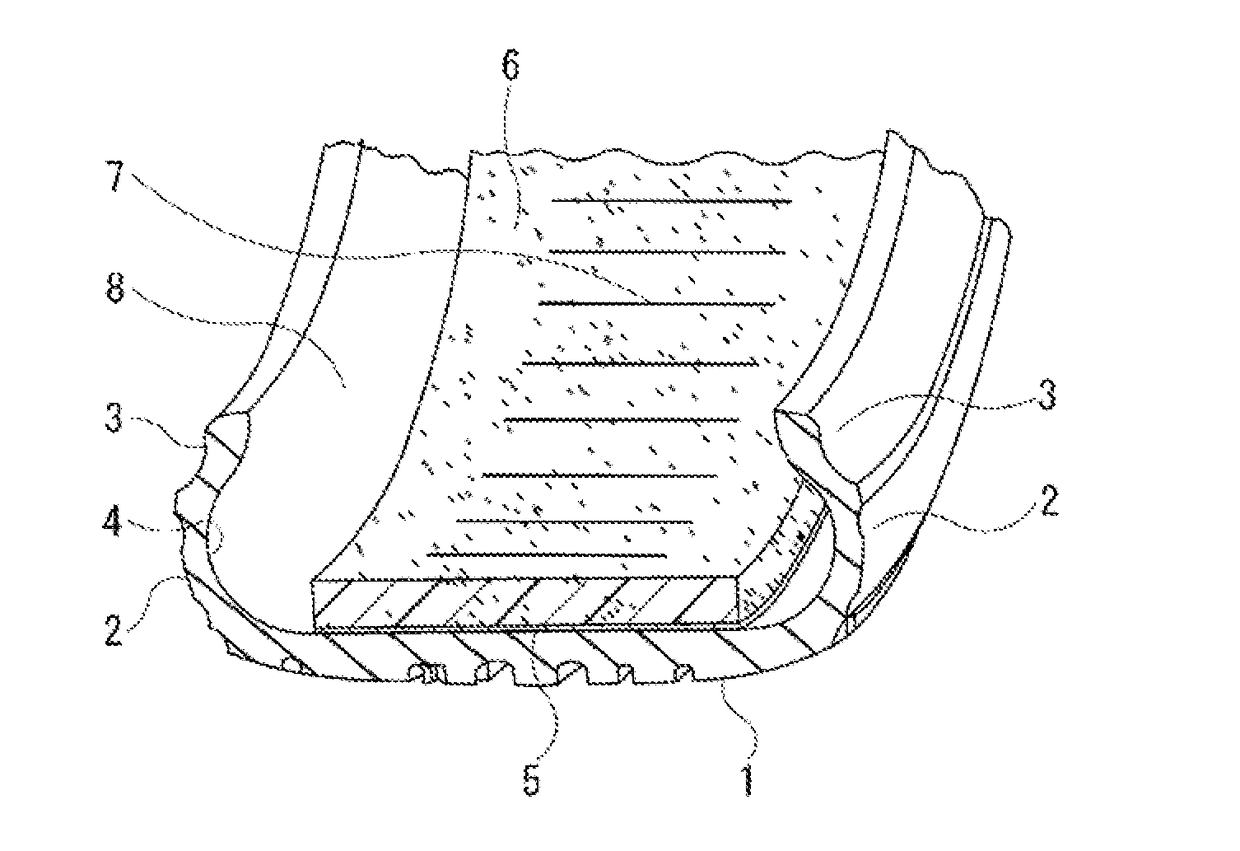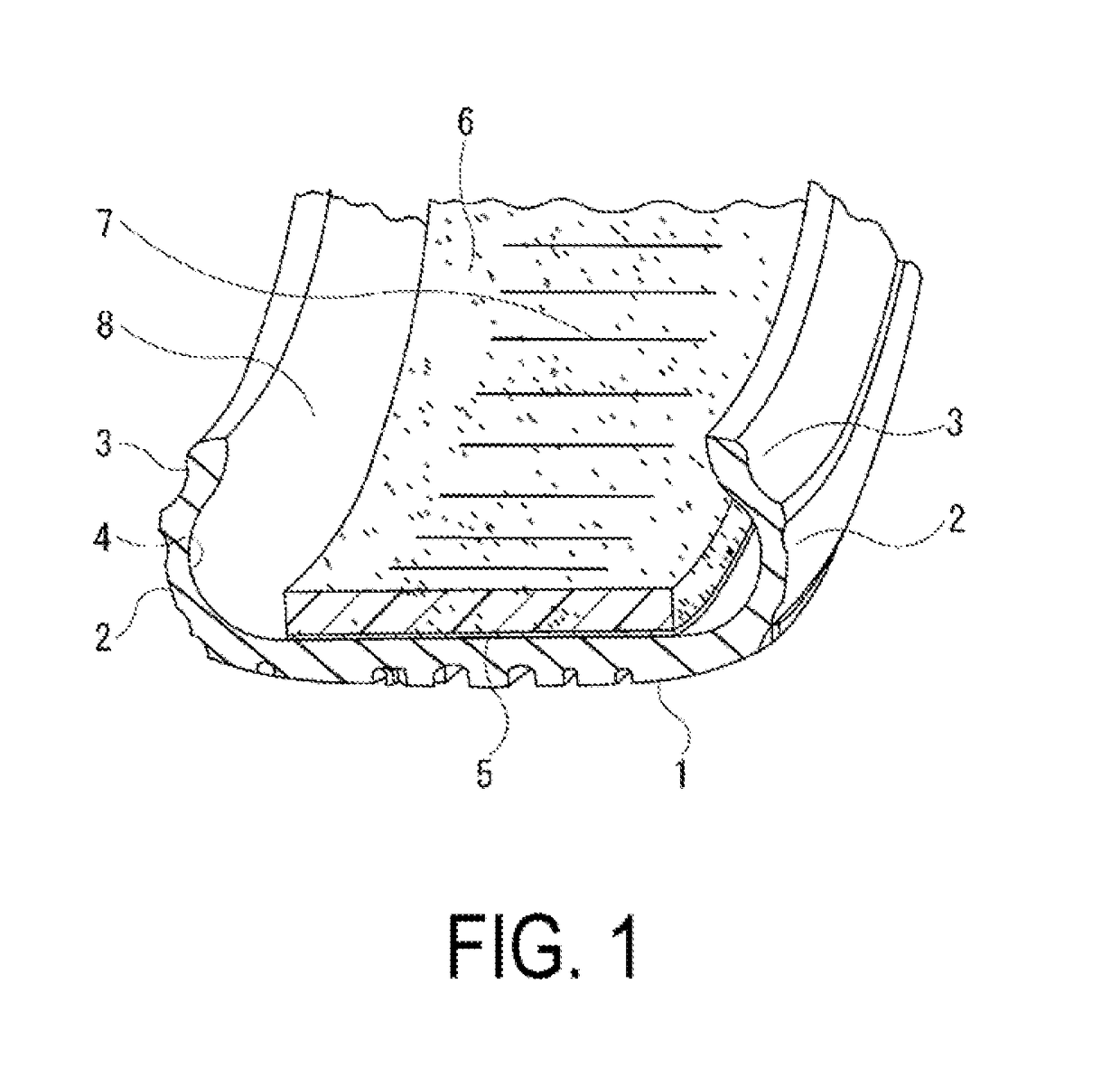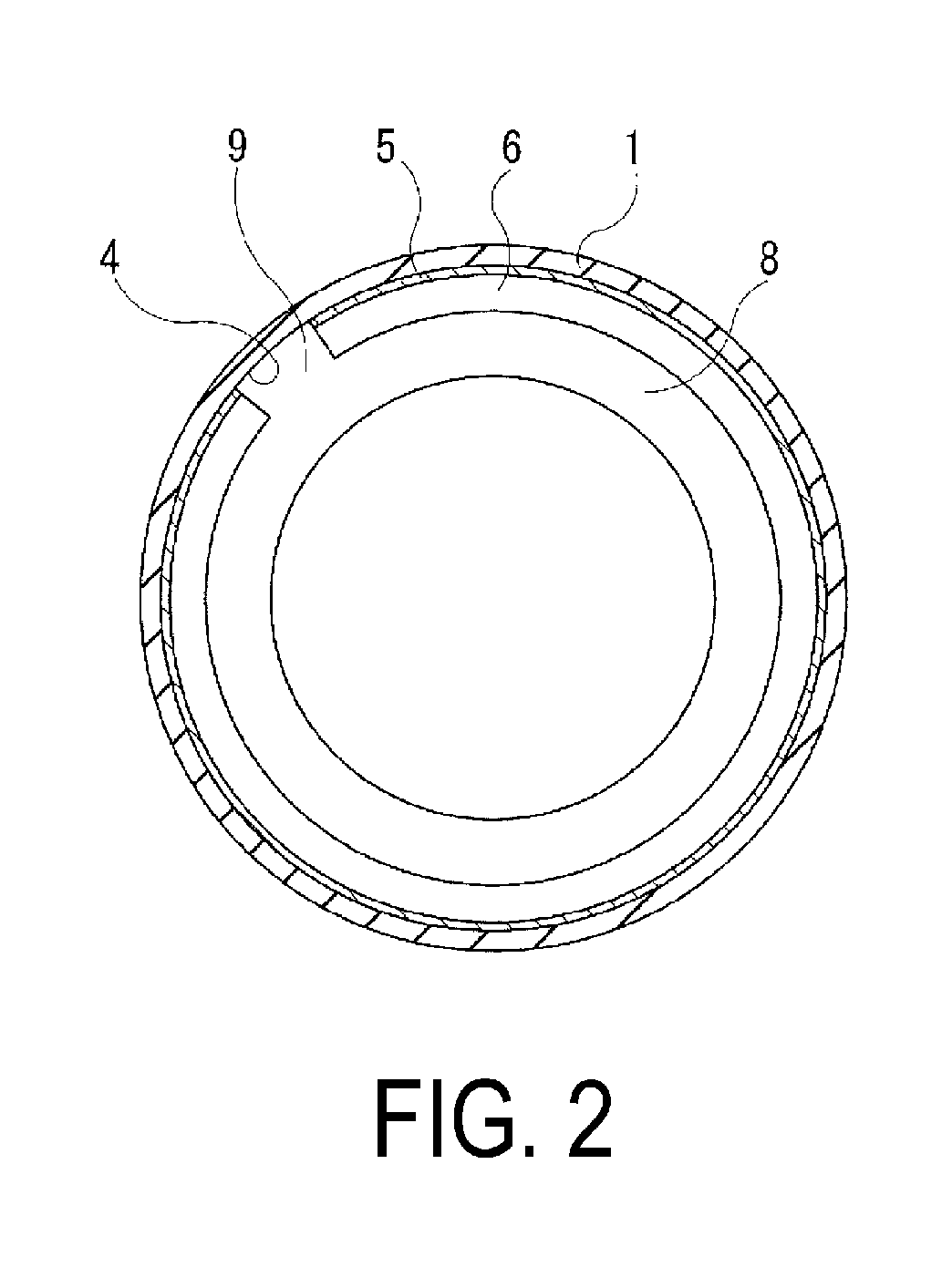Pneumatic Tire
a technology of pneumatic tires and tyres, which is applied in the field of pneumatic tires, can solve the problems of high-speed durability degradation, tire noise, and deformation of elastic fixed bands, and achieve the effects of reducing noise, improving durability, and increasing the volume of band-like sound absorption members
- Summary
- Abstract
- Description
- Claims
- Application Information
AI Technical Summary
Benefits of technology
Problems solved by technology
Method used
Image
Examples
examples
[0030]Tires of a Conventional Example, Comparative Example 1, and Examples 1 to 11 where the presence of the cuts, placement of the cuts, angle θ of the cuts, depth of the cuts (depth d / thickness D×100%), and width of the cuts (width a / width A×100%) were set as shown in Table 1-1 and Table 1-2, were prepared for a pneumatic tire with a tire size of 275 / 35ZR20 provided with an annular-shaped tread portion extending in a tire circumferential direction, a pair of sidewall portions disposed on both sides of the tread portion, and a pair of bead portions disposed on an inner side in a tire radial direction of the sidewall portions, where a band-like sound absorbing member is adhered on an inner surface of the tread portion in the tire circumferential direction.
[0031]The high-speed durability and the durability of the band-like sound absorbing member during high deflection (rubbing between the band-like sound absorbing members and peeling of an adhering surface) were evaluated for the tes...
PUM
 Login to View More
Login to View More Abstract
Description
Claims
Application Information
 Login to View More
Login to View More - R&D
- Intellectual Property
- Life Sciences
- Materials
- Tech Scout
- Unparalleled Data Quality
- Higher Quality Content
- 60% Fewer Hallucinations
Browse by: Latest US Patents, China's latest patents, Technical Efficacy Thesaurus, Application Domain, Technology Topic, Popular Technical Reports.
© 2025 PatSnap. All rights reserved.Legal|Privacy policy|Modern Slavery Act Transparency Statement|Sitemap|About US| Contact US: help@patsnap.com



